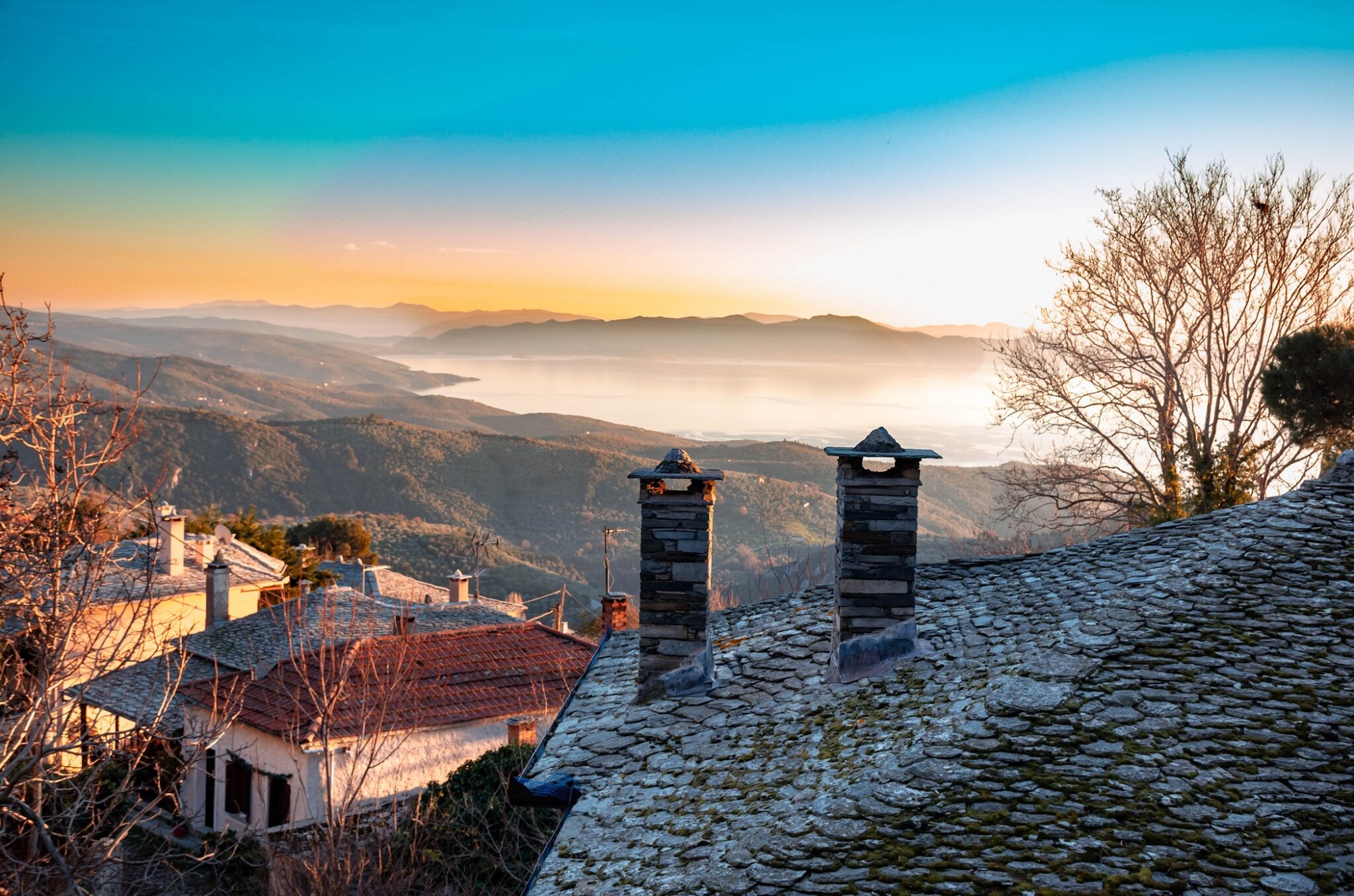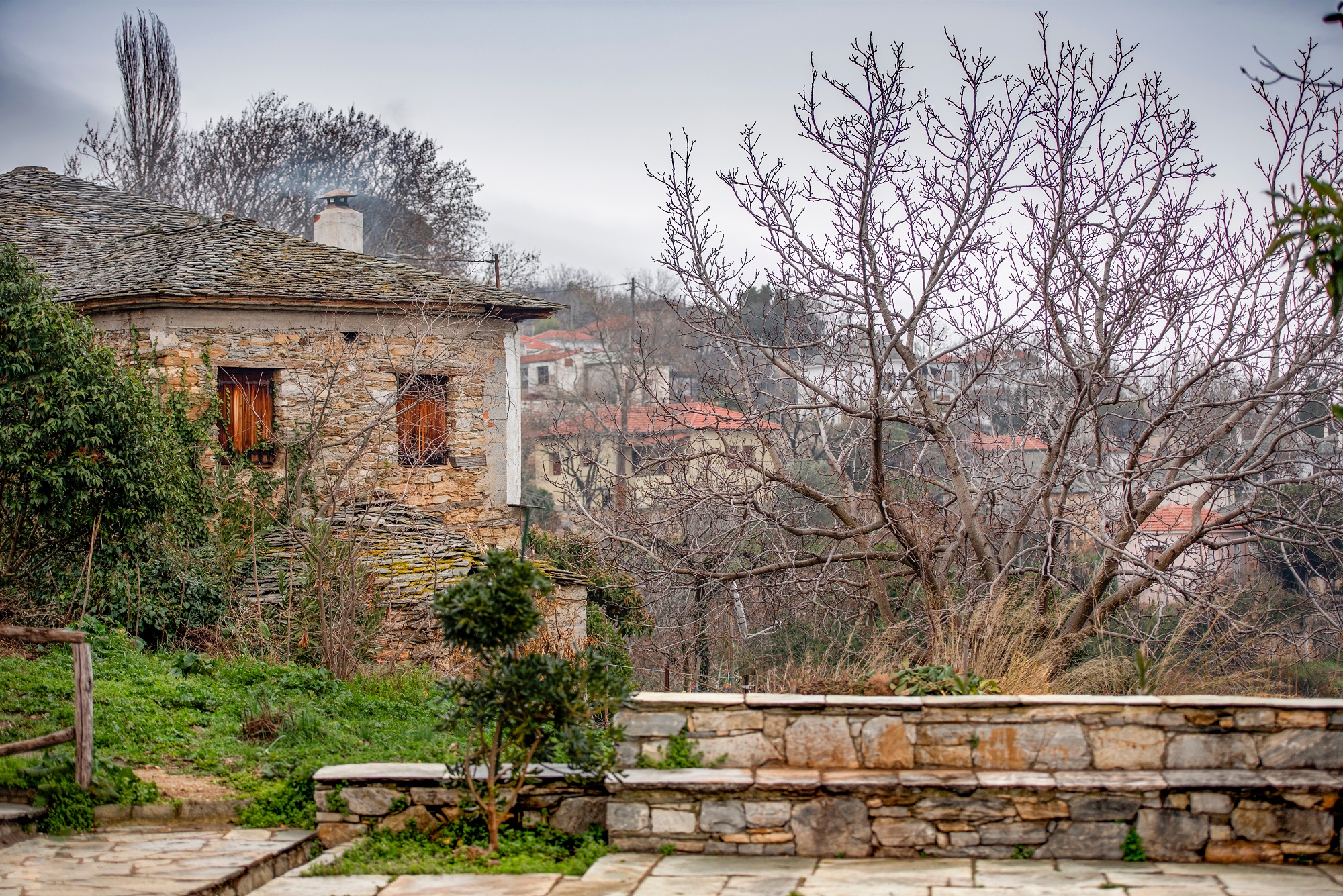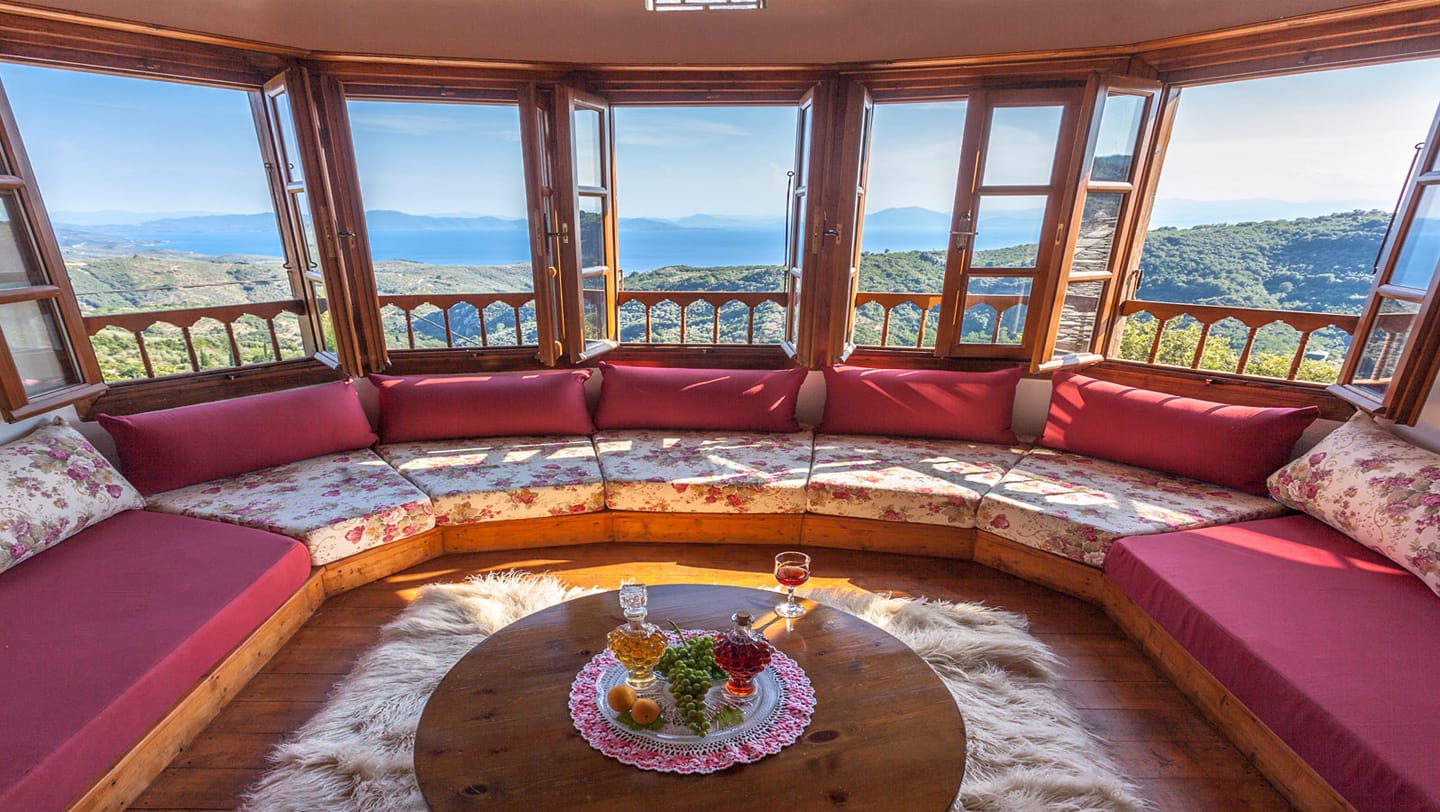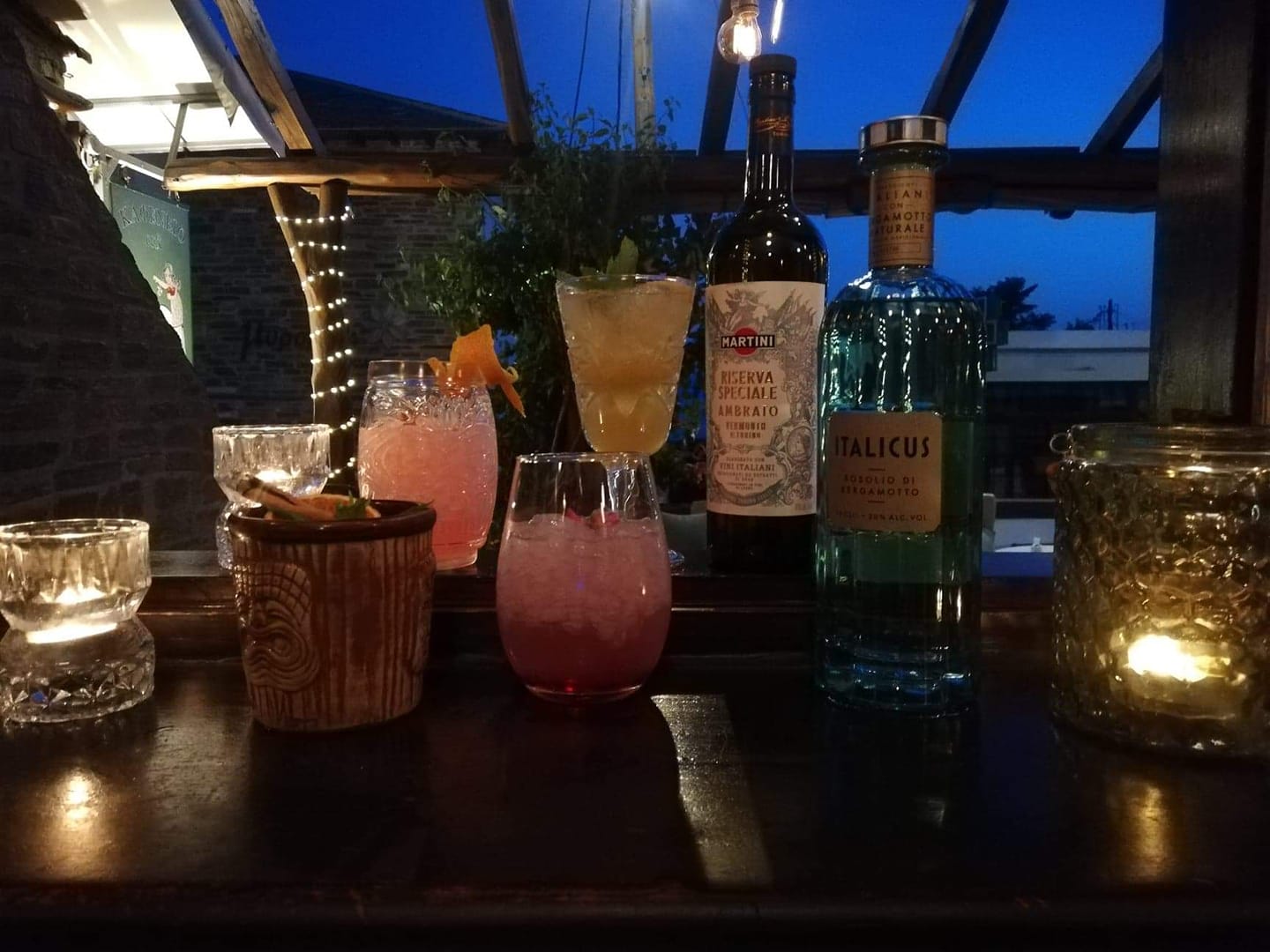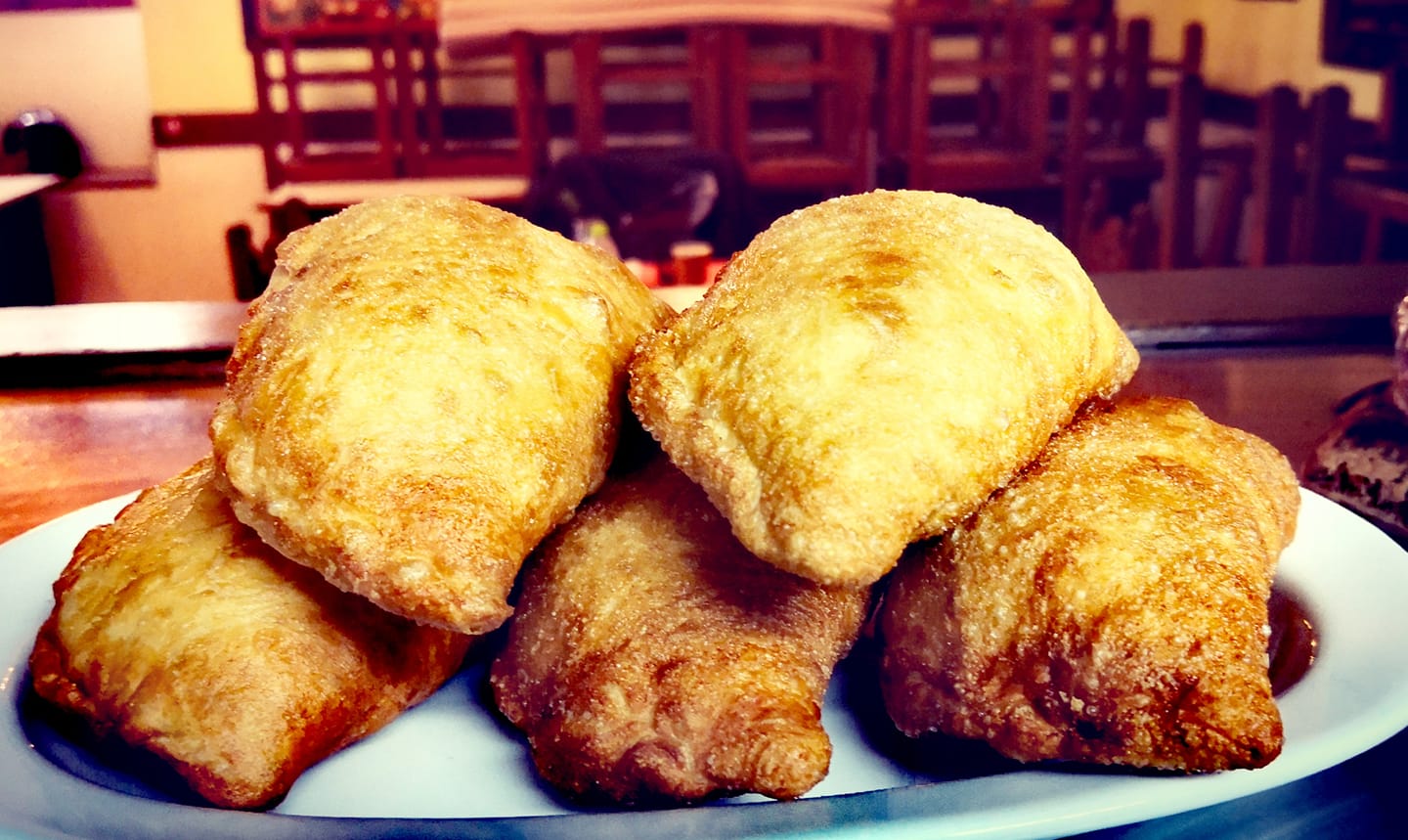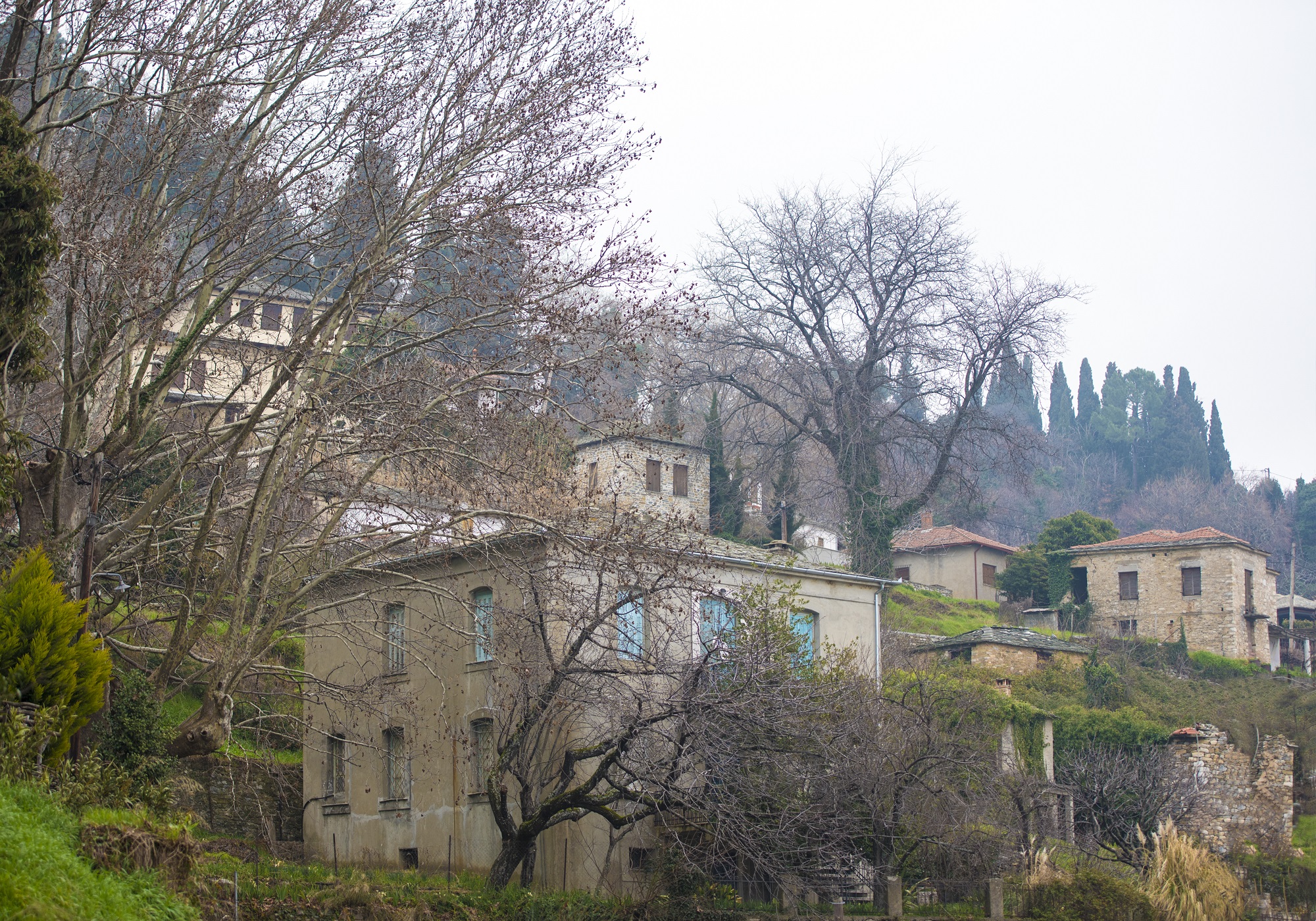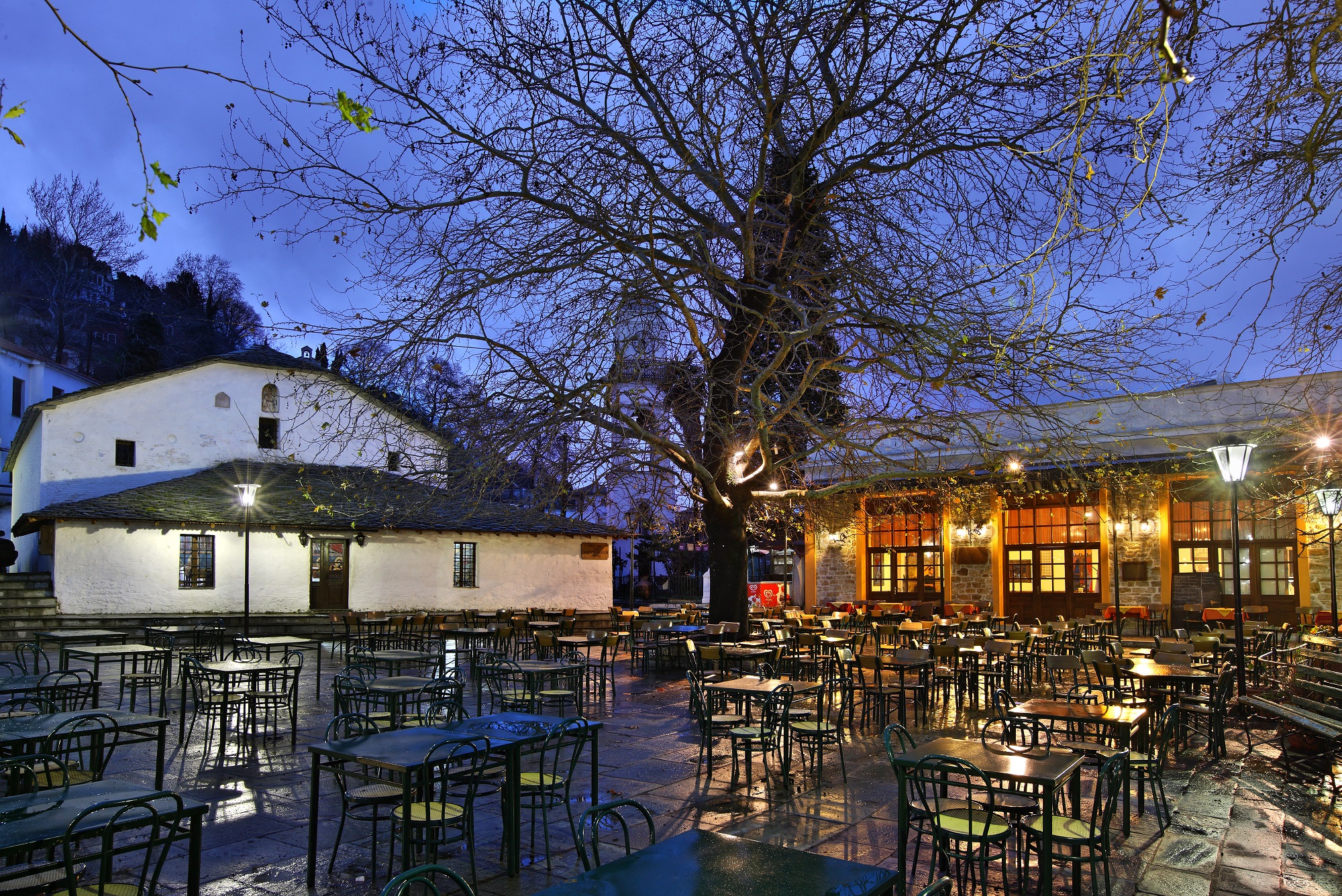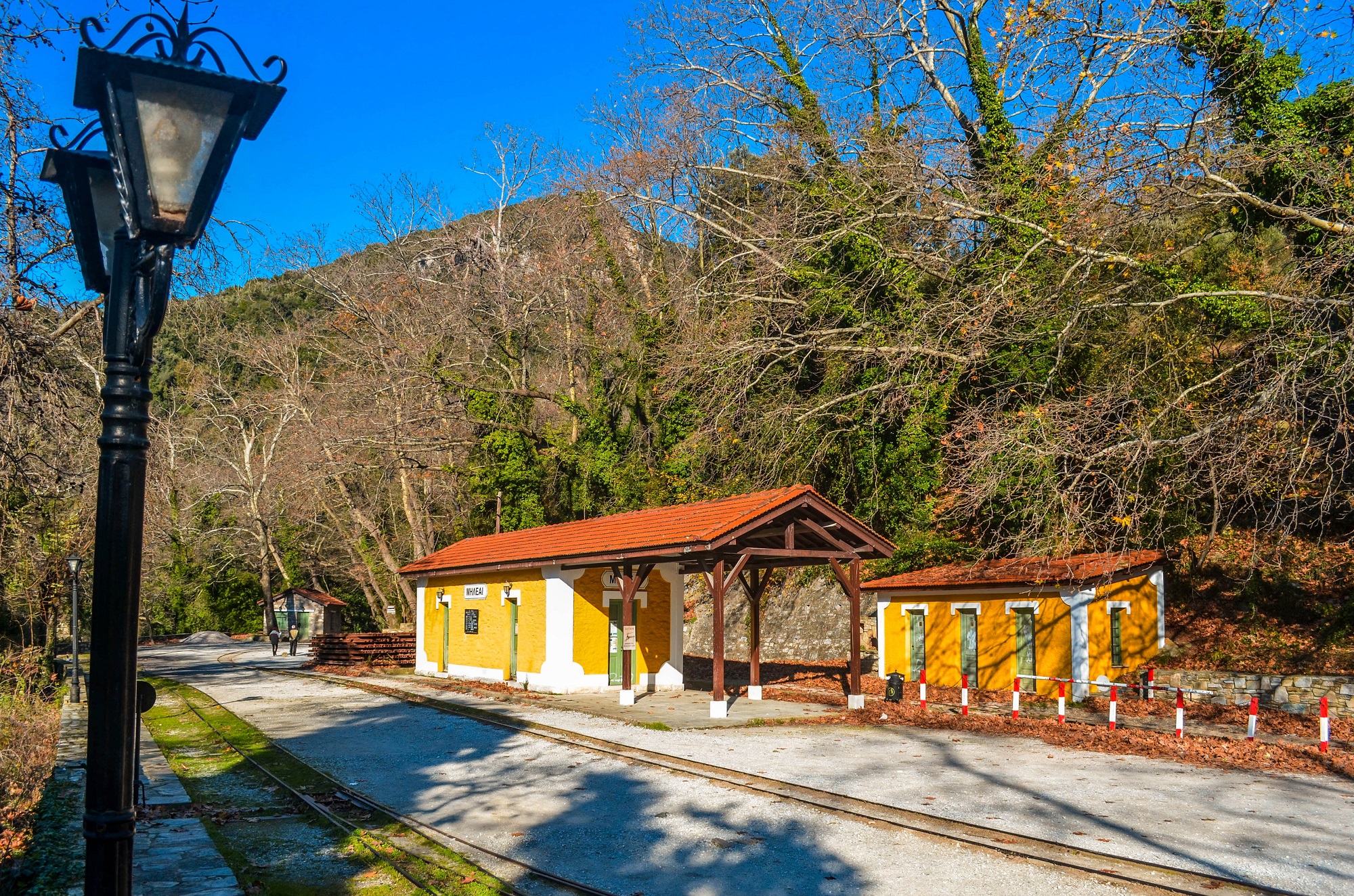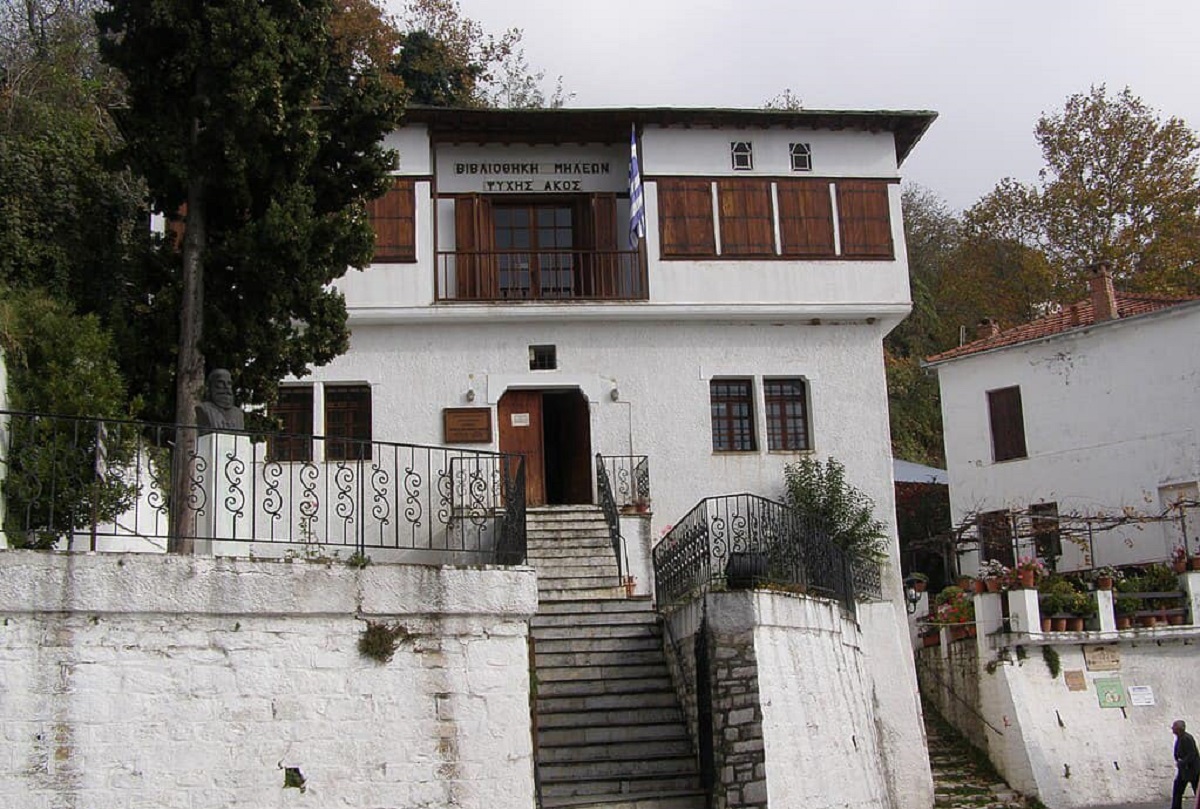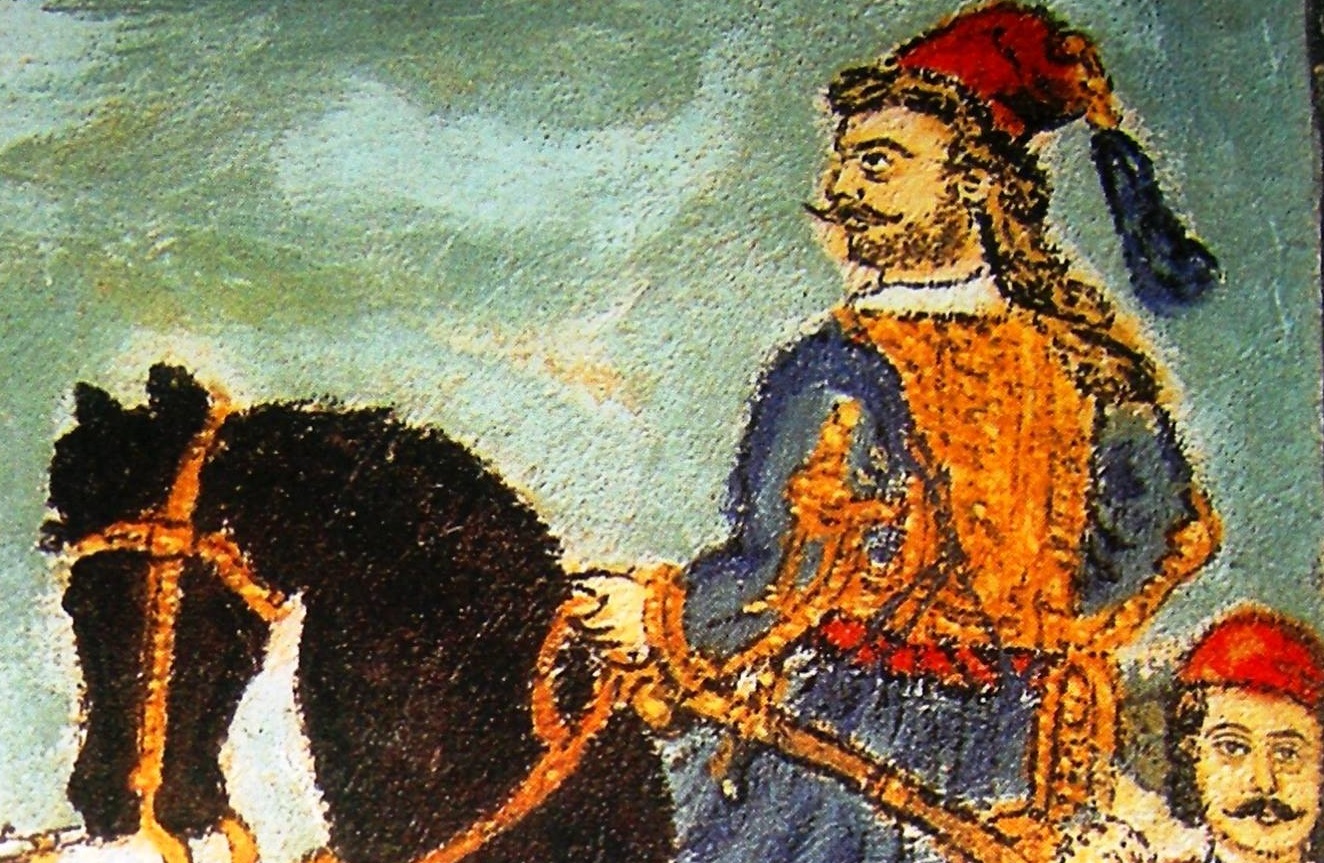Milies is considered one of the most beautiful villages in Pelion, but that might not mean much, given that we’re talking about an area filled with natural beauty. So, perhaps the greatest compliment for Milies is what many visitors say: that, in its own way, it’s a perfect example of the essence of the Centaurs’ mountain.
Milies is built at 400 m altitude and is 28 km away from Volos. According to the 2011 census, the population is 640 permanent residents. Tradition has it that Milies was founded by migrants from Milies in Evia – a village that might still exist, but in the past was the victim of pirate attacks that at times resulted in its abandonment. This has not been verified by historic research, but the oldest mention of the village in writing (1510) does in fact belong to a period filled with pirate troubles.
Milies experienced significant economic growth and since 1814 was the base of the legendary “School of Milies”. It was founded by Anthimos Gazis, Grigorios Konstantas and Daniel Philippides and was a higher education institution, something unusual for the early 19th century in Greece, teaching science and philosophy in line with the ideas and practices of western Europe during those restless times. In fact, a library, that still exists, was set up as part of the school.
In 1821, Anthimos Gazis raised the flag of the Revolution and took part in all the fights that took place in the wider area. However, the Revolt in Thessaly wasn’t successful and soon the stronger Ottoman powers stifled it. Milies were to become part of the Greek state much later, in 1881. The village also suffered a lot of troubles during the German occupation (1943) when in retribution to local resistance acts, the Germans set fire to the village while also executing 25 residents.
After the catastrophic earthquakes of the 1950s, and the intense urbanization of Greece, Milies further declined, but starting in the 1980s the village managed to get a new life, as a popular tourist destination this time.
Where to stay
The tourist development that Milies went through since the 1980s, resulted in the creation of quality lodgings. The “Archontiko Filippidi” mansion – a renovated traditional home – is one of the most famous among them, and offers accommodation surrounded by green, with a view of the blue of the Pagasetic gulf. Its living room, with the traditional Pelion windows offers an unobstructed view.
“Myrovoli” offers a family experience and homemade breakfast. The best card of the small hotel “Palios Stathmos” is the amazing view from its new rooms on the top floor. The guesthouse “Iliovolo” is traditionally decorated and has a great view, as well as its own café with a fireplace. The guesthouse “Anemoesa” is also an amazing option, just 150 m from the main square, with a lovely sunny balcony.
Where to go for coffee and/or drinks
“Anna, na ena milo” is one of the most famous café-bars in Pelion, with distinct wall décor featuring Elvis Presley and old Olympic Airlines and Papadopoulou Biscuits advertisements. You absolutely must try their apple pie and lemon tart.
The café-wine bar “To rodo ke to aidoni” is also nice, and serves amazing cocktails, making it ideal for a night outing, while it also has a great little balcony: if it’s not too foggy, you can see a big part of the Pagasetic gulf from there. Another great option, with sworn regulars that may even come from Volos, is “Jim O’ Clock”. You can get coffee to go but must try their apple spoon sweet (traditional preserves).
Where to eat
Milies have many taverns for you to choose from. “Salkimi” offers great meat, as well as courgette balls or fried cheese pies – while if it’s wild boar hunting season, we wholeheartedly recommend it. “Panorama” is known for its large and of great quality portions, while it also offers many options for vegetarians: their homemade spinach pie is amazing.
“Aloni” is the place to go to have lamb chops, spetzofai (traditional Pelion dish prepared with sausage and peppers in tomato sauce) and buffalo soutzoukakia (traditional type of meat balls with origins in Asia Minor). “Liostasi” is a traditional tavern surrounded by trees that will welcome you with a shot of tsipouro (traditional pomace raki). Another great option, especially during the summer, is the restaurant “Aigli”, while it’s worth visiting the restaurant of the “Palios Stathmos” hotel for pork kontosouvli (large skewer).
5 things worth doing in Milies
The village has a lot to offer to visitors, both in terms of nature and sights, as it combines a significant history with a traditional setting surrounded by chestnuts, olives and of course apple trees (milies in Greek means apple trees). After all, this combination is what makes it, according to many, the perfect embodiment of the essence of Pelion.
Walk around the amazing nature that surrounds the village
Milies is a stunning and very well-preserved traditional village filled with stone mansions, picturesque cobbled alleys and many founts. But the surrounding nature is equally stunning, offering many paths for you to explore it. The Nature Club of Volos often plans excursions here, which is quite telling.
A nice and easy hike, even with children, is to go up to the Athonas chapel, while more experienced hikers can head to the beach Boufa or to Tsangarada, both longer – and at parts harder – trails. Another route for experienced hikers is the one that starts at the De Chirico bridge and ends in Kala Nera and takes about 2 hours to complete.
Ride the famous “Mountzouris” train of Pelion
In 1903, Milies – the blooming central village of the time – was connected to the industrial and trading centre of Volos via railroad built by the Italian engineer Evaristo de Chirico, father of the famous surrealist painter Giorgio De Chirico. In fact, just 500 m from the station, the bridge known as De Chirico bridge, a one-of-a-kind construction globally since the track curve on the straight bridge, still stands.
The train became famous as “Mountzouris” (in a free translation “he who will smudge you with coal”) but it fell into disuse in the second half of the 20th century, officially becoming obsolete in 1971. In 1985, however, it was declared a protected historical monument, and in 1996 it was put back in operation after the necessary repair works, gaining a new life, as a tourist sight, keeping its old nickname.
The four carriages, ride some of the narrowest train tracks in the world (60 cm) and go from Ano Lechonia to Milies and back, only between April and October. It’s considered one of the most beautiful train rides in Europe due to the beautiful mountainous landscape covered in thick plane tree and holly forests.
Visit the Public Library “Psychis Akos”
In 1814, when Anthimos Gazis, Grigorios Konstantas and Daniel Philippides decided to open a higher education institution in Milies, they faced opposition by the Ottoman administration, and in order to go around them, they named it “Psychis Akos”, which means soul’s cure, presenting it as a spiritual institution. In essence, however, they founded an academy that became well-known as the “School of Milies”. Gazis donated his entire personal library, as well as scientific instruments that were hard to acquire at that time in Greece, to the school.
When the War of Independence broke, in 1821, the school had to stop its operation since the three founders actively participated in the war. After the failed revolt in Thessaly, Gazis sought refuge in southern Greece. In 1834, the school reopened with Konstantas as its director, but had to close completely when he died, in 1844. The extensive library and Gazis’ instruments remained in Milies, so when in 1928 a new building was built to house them, an endowment by Crystallia Ikonomaki, it was named “Psychis Akos” as tribute to them. Unfortunately, when the Germans torched the village in 1943, the building was covered in flames, and a big part of the collection was lost.
Since 1955, the building operates as a public library and is in fact one of the oldest in the country. Despite the 1943 destruction, it still has thousands of titles, including some rare books published between 1497 and 1899, as well as manuscripts from as early as the 10th century and up to the 18th century. In addition, the library houses the flag of the Revolution that Gazis raised in 1821, as well as more recent heirlooms – like the group photo of the villagers taken in 1903 when the train was inaugurated.
Visit the Folklore Museum
Located just a few minutes from the main square, housed in the ground level of the City Hall, the museum houses a nice collection of local costumes and everyday objects (donated in 1987 by Eleni Fey-Stamati) but what makes it a place every tourist must visit is the fact that it also houses a collection of works by Theofilos.
Theofilos Hatzimihail was a great folk painter with a unique personal style, who was from Mytilene, but lived for many years in Pelion. In 1897, he was in Milies where he stayed for about 3 years, painting in houses or creating religious icons.
Visit the church of Taxiarches
It’s one of the strangest churches in Greece. It’s not known when it was built and by whom, and only 1741, the year it was renovated is known. It’s an example of the local architecture of that time, however, so it can’t be much older.
The first paradox about it is that while great care has been taken to ensure perfect acoustics – by placing upturned urns in the domes and by utilizing underground wells – everything is made in a way so as nothing can be heard outside. In addition, there is no bell tower nor any obvious religious symbols. It’s as if it was not meant to look like a church.
The second paradox is a religious scene with the inscription “The Futile Life of this Deceitful World” and is hidden away in the right corner of the entrance – in fact for many years it was hidden behind old furniture. The fresco includes an unusual, almost incompatible with a Christian Orthodox church, representation of the Zodiac cycle. Some monk from Mount Athos who lived in Milies for 33 years to paint the icons of the Taxiarches church is said to have painted it, though his name has not survived in local tradition.
Read also:
7+1 restaurants and taverns in Pelion honouring the authentic local cuisine
Pelion goods you just have to take back home
Carefree walks, plenty of wine and crystal clear waters in southern Pelion



